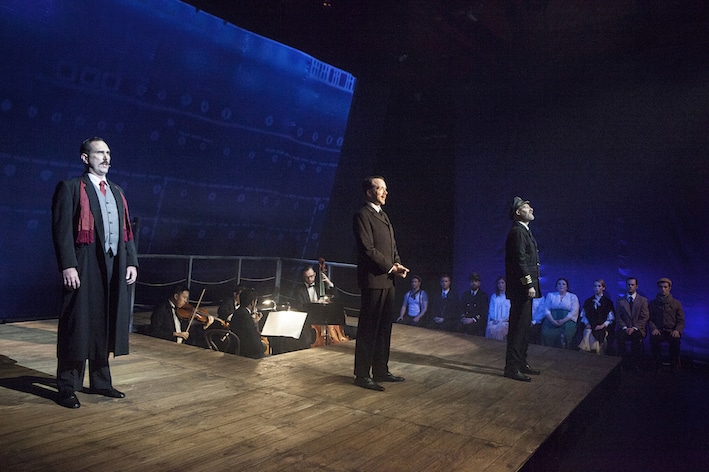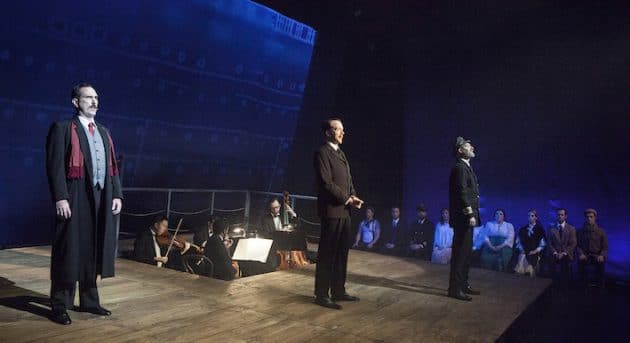StageArt: Titanic, the Musical
StageArt’s new chamber version of Titanic, the Musical is a compelling interpretation of rarely-performed piece, which opened on Broadway in 1997 and won five Tony Awards.

From its inception RMS Titanic was a ship of mythic proportions. The story of its ill-fated maiden voyage is conveyed with a sensitivity that doesn’t lose any sense of the enormity of the events. Through the exploration of many small narratives of passengers on board, the wider narrative of the ship’s journey sets sail and builds to a conclusion more powerful than audiences are likely to see elsewhere on the musical theatre stage.
The use of simple and effective stagecraft elements, such as the projected backdrop detailing the time and date of the scenes, and the use of wooden chairs to convey various objects throughout the piece, were innovative and evocative and didn’t distract from the characters. The slanted wooden stage in particular, with the divine chamber orchestra inset, was an appropriate and clean design that provided a suitable framework for the performances to shine.
It is difficult to single out individual players from this impressive ensemble, most of whom portray multiple characters of all three ship classes. However, special mentions must be made for some of the standout performances.
Christopher Southall as the dutiful waiter Henry Etches was seemingly made for the role. His understated presence evolved throughout the evening, eventuating in one of the most fully-realised, and deeply human characterisations on the stage. Similarly, Greta Sherriff as second-class passenger Caroline Neville was innately watchable with her vocals and physicalisation seemingly plucked from the era. Joel Granger as the dedicated wireless officer Harold Bride also made a lasting impression; a vision of the doe-eyed innocence lost in the darkest, coldest waters.
Act one highlights included the ringing “Godspeed Titanic”,the joyous “Doin’ the Latest Rag”, and the epic act one closing sequence. However, in Act two, the company took their performances to another level.
As the ship sunk, the harrowing presentation of humanity’s response to extreme circumstances was tense, shocking and affecting. The fight between the deciders of the ship’s fate regarding who to blame for the tragedy is one of the most exciting and distressing moments of the piece. In particular, Don Winsor, as the ship’s designer, and Jon Sebastian, as White Star Line director J Bruce Ismay, embodied their characters completely, bringing the audience into their bitter, desperate feud. From the moment that the ominous reality was set in motion, the piece took on a new heft. From the collision to the conclusion, Titanic the Musical achieves greatness.
In every age, the ship’s visionaries proclaim, humans attempt to create the magnificent, the impossible. They evoke imagery of the pyramids and the Great Wall of China – monuments that have proven unshakable. It is humanity’s quest for greatness, to be master of its own environment, that has led to such great achievements, but this confidence and the forward momentum that defines it has also facilitated its most humbling of failures. StageArt has put forth a stunning staging of this complex musical, transforming an unfathomable disaster into an artistic triumph.




